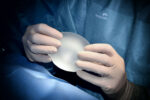Facts About Breast Cancer Identification
- On suspicion of breast cancer doctor examines chest with his fingers, ordering an X-ray and possibly an ultrasound
- If the doctor in these studies find a tumor to make a biopsy (Pap smear) from the tumor to diagnose cancer
Generally
Clearing of breast cancer are often started because you have felt a lump or change in the breast. Breast cancer is also sometimes by routine examinations of the chest. There are several ways to test for suspected breast cancer, but they usually go through a program called “triple diagnosis”. This means that doctors are looking for the tumor in three different ways, usually by feeling the breast (palpation), X-ray (mammogram) and ultrasound. To do this normally, but a number of factors come into play, and each patient is assessed – also in relation to other studies. Here you can read about the most relevant studies.
Palpation – breast examination by hand
The first part of the study the physician can carry out without aids. The doctor asks about your medical history and whether there are cases of breast cancer in your family. Next, make the doctor a physical examination of your breasts. The doctor looks for anomalies in the breast of appearance, among other things, when you stretch arms up and out to the sides. Then follows a focused examination where the doctor by hand feel for abnormal tissue in the breasts and the area around the chest. The doctor also feel after abnormal lymph nodes under the arms and around the collarbone.
Mammography
Mammography is an x-ray of the breasts and can in some cases determine whether a nodule is benign or malignant. The study is not always sufficient to refute or confirm the diagnosis, but in combination with other studies is valuable. Despite the fact that mammography overlooks 10-15 out of 100 cases of breast cancer, it is a study which is well suited as a routine examination of suspected healthy.
The downside of routine tests is that in some cases will be X-ray findings that provide strong suspicion of breast cancer, but after a time of uncertainty and unpleasant investigations into the suspected sick, turns out to be normal. Until that comes even better studies, it is unfortunately the price that must be paid to detect cancer at an early stage and thus be able to save many people from a serious illness and death. In findings that raise the suspicion of the diagnosis, further tests will be needed.
ultrasound
This is a harmless and painless examination that can be done in addition to a mammogram. The study is rarely done alone, since it is a little too coarse and easily overlook small changes. However, it is suitable to determine the structure of detected changes, and it can be used to determine whether a change is a real knot (like cancer) or a cyst (fluid-filled cavities). Ultrasound can also be used to “screen” for when the doctor must tap fluid from a cyst or tissue sample from a lump in the breast.
Biopsy
Biopsy is the only study that can give a definitive answer as to whether it is cancerous or not. The study consists of thorough microscopic examination of cells from a small sample of tissue from the nodule in the breast. To answer must be correct, it is necessary that the needle sample from the diseased area and not from the healthy, surrounding tissue.
As a rule, the tissue sample sucked out through a needle, often under the guidance of ultrasound. This technique (needle biopsy) is much more gentle than surgical removal when the tissue sample is needed for the pathologist (doctor who assesses tissue sample) must be able to determine if they are cancerous or not, is very small.
Surgical removal is effected by the surgeon cuts a small incision in the chest, so to take part or all of the suspicious knot out. Although the entire tumor is removed, the doctor will usually perform an extended intervention if test results show that it comes to breast cancer.
A relatively new technique means that you now find it safe enough only to remove small breast tissue in each case and also to examine the lymph nodes near the breast. When cancer spread spreads the cancer almost always to the surrounding lymph nodes first. If there are no signs of spreading to some of these lymph nodes, the likelihood of spread to other organs very small. To get rid of examining many lymph nodes using the doctors will generally progress of a technique in which spraying a radioactive compound into the tumor area, as to see which lymph node (sentry-lymph node) that drains this area. If there are no signs of cancer in the first sentry lymph node (the injected substance traceable to) it is likely that the cancer does not spread to any other place. This node is then usually removed in connection with the biopsy.
Regardless of how the sample is taken out, it will always be a specialist for the assessment of such tissue samples, which looks at the sample (pathologist). The sample must first be made ready to study (prepared). This means that the sample answer usually not clear until you’ve gone a few weeks. If the sample is taken at a smaller hospital, it may be that you are referred to a larger hospital if necessary for further investigation or treatment.
Other
The tissue sample can also be used to identify how well your type of cancer will respond to hormone therapy and other medicines. In the investigation of the disease, it may also be necessary to implement a number of other studies. X-ray of the lungs is made to see if the cancer may have spread to the lungs. It also happens that carried other image studies. In some cases there will also be injected contrast agents in via the blood vessels so that change becomes easier to see the image studies.
Grading of the tumor
Depending on the tumor characteristics will be graded. For the least virulent and least common tumor types biopsy be enough to do it, but usually determined gradation with certainty only when the tumor is operated out. This means, among other things, that adjacent tissues and lymph nodes are tested for microscopic (invisible) proliferation.
How much breast tissue to be removed in each case depends on several factors. The results from the biopsy, examination of the lymph node and the sentry-observations which the surgeon makes the intervention, determines the extent of the engagement. In some cases the entire breast removed (total mastectomy), but in other cases it is enough with a partial removal of the breast tissue (breast conserving surgery). As a rule, also removed a number of lymph nodes in the armpit.
Staging of the disease is done for several reasons, both to estimate the severity and prognosis (how to think the disease will progress) as well as to determine the finishing is most suitable. The staging tells something about how big the tumor is, which parts of the chest are involved, how many and which lymph nodes affected and whether the tumor has spread to other parts of the body.
The least severe test results are CIS (carcinoma in situ). These are cell changes that have not yet developed into a real cancer, but who have a high probability to eventually become a cancerous tumor. Upon discovery of the CIS must be closely monitored by specialists, and usually the physician will recommend that the detected tissue changes are removed.
The more widespread and the greater the cancer change, the higher stage tumor. Stage 4 is the most severe and most advanced cancer. Staging are not only say something about the type of treatment that should be given but also something about the likely outcome of treatment. A person with breast cancer stage 1 has over 90% chance of being alive five years after diagnosis, while those with cancer that has reached stage 4, has between 15 and 20% chance that they are still alive after five years . It is important to remember that this is only the statistics and probabilities based on an average. How it will go with the individual patient, only time can show.





